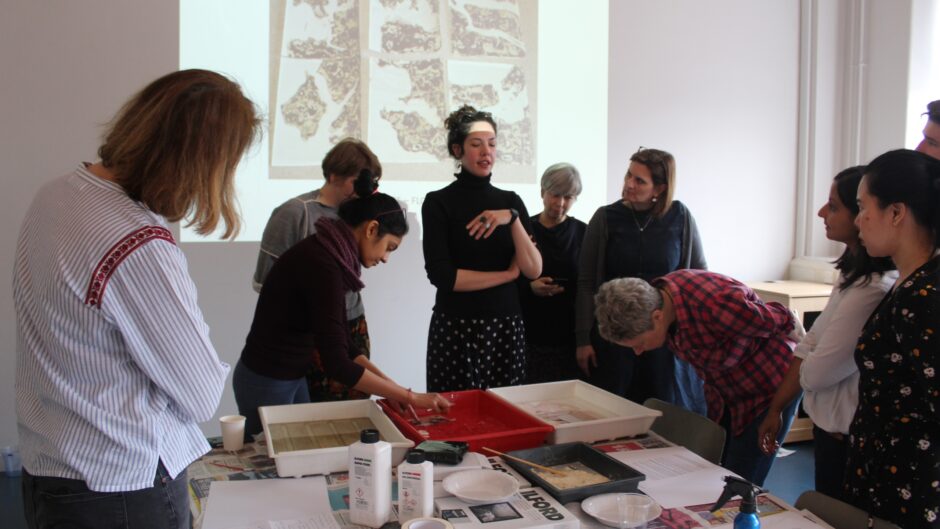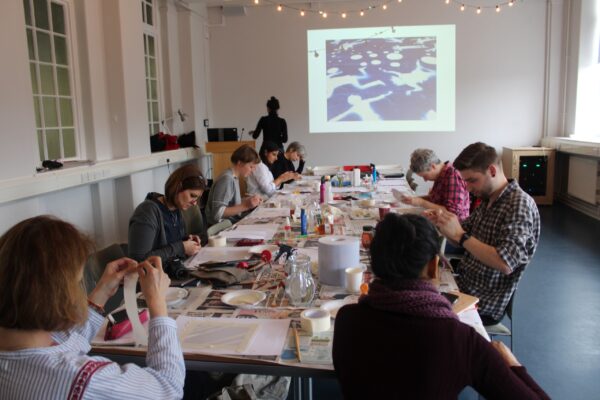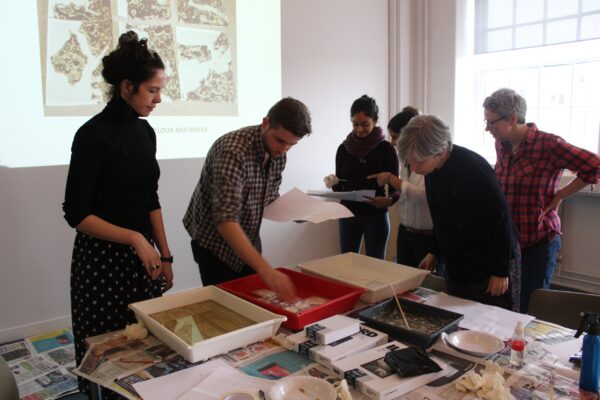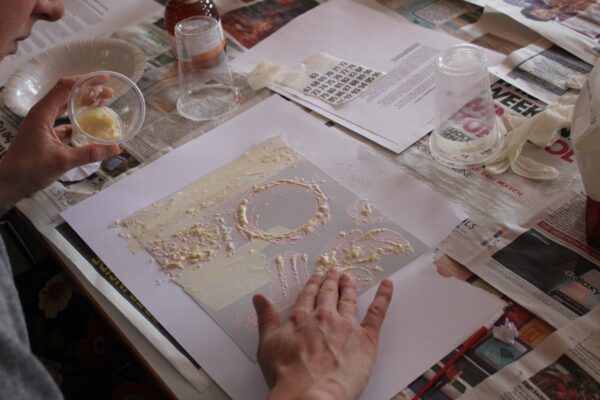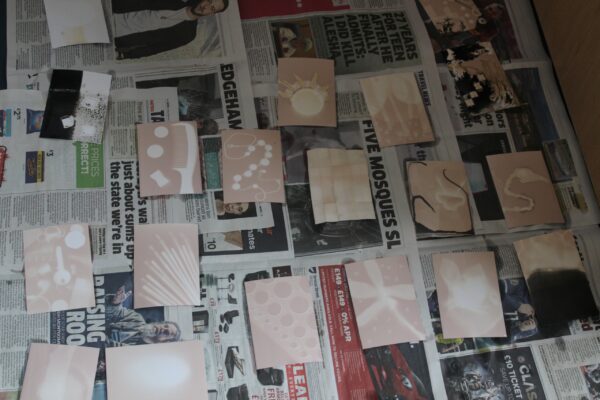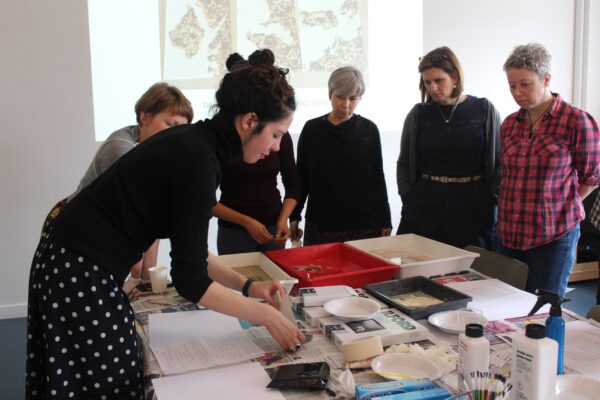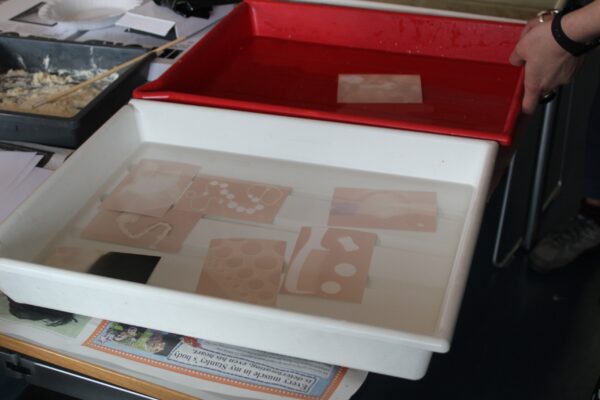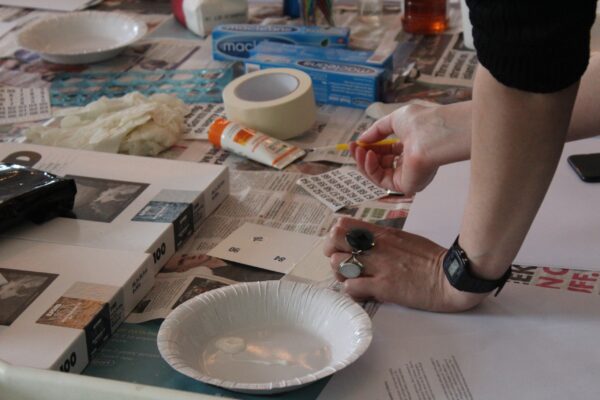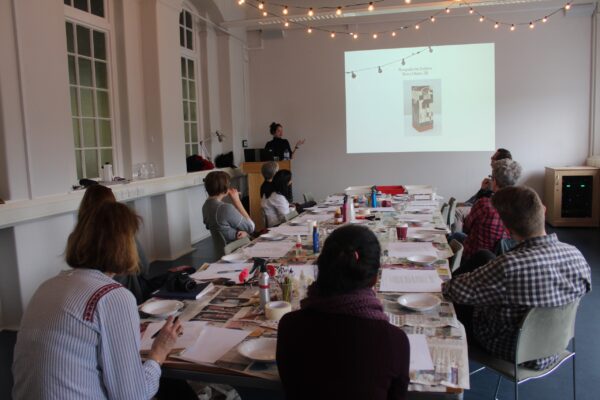The latest #MaterialWitness session encouraged participants to interrogate the materiality of photography through a series of unique experiments in analogue image making with artist and lecturer Melanie King (Royal College of Art). Focusing on basal photographic techniques, including chemigrams and lumen prints, practical experiments developed in tandem with a philosophical debate over the ubiquity of digital photography in modern humanities research and what is lost in its translation away for the haptic.
Camera-less technologies have roots in the earliest forms of photographic image-making beginning in the 1830s with William Henry Fox Talbot’s photogenic Drawings. The use of silver salt (silver iodide) and a developing agent (gallic acid and silver nitrate) to bring out a latent image on paper revolutionised image production. However, the complex alchemical balancing required to generate a perfect representation was predated by a more relaxed experimental approach, photograms and lumen prints simplified processes and reduced the need for hard to attain substances, enabling photographic pioneers to the generate images from everyday materials.
Taking these experimental as a starting point, our day focused on two camera-less processes, lumen prints, also as solar photograms and chemigrams. Participant Yulia Mahr describes her thoughts on getting hands on…
“A strange and beautiful thing happens when you ‘paint’ photographic paper with everyday substances – flour, honey, sun cream, oil – and then immerse it into photographic chemicals. Something of a quasi-alchemical process takes over – transforming each element into trails of light and dark that produce unique and other-worldly images. Originally invented by Pierre Cordier in the 1950s, ‘Chemigrams’ as he called them, emerge from a photographic technique that uses no camera or darkroom, and has more in common with painting than photography. Relying on chance chemical reactions, it also calls for a child-like sense of play. You can’t control this one. Our room for our workshop at the Courtauld reminded me of my daughter’s old kindergarten – a large table covered in a waterproof tablecloth – scissors, flour and sticky labels spread everywhere. A complete mess by the end of the day.
This session of Material Witness, led by artist Melanie King hoped to free us to interrogate physical objects … but as I learnt about the lives of those also on the course, and watched these strange and unfamiliar images take shape and emerge, I think it did more than that. In this oddly disconnected age, when our sense of community is being eroded from all sides, it allowed not only for an intellectual engagement with materiality, but also provided a medium for us to discover more about ourselves and one another.”
